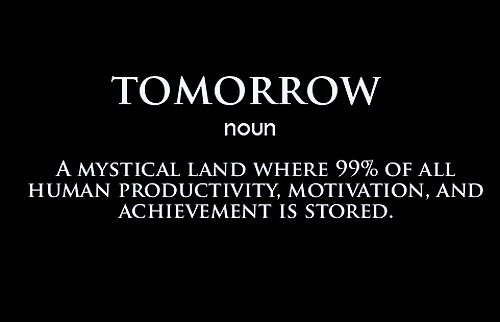
FP :Deepanjana Pal Sep 19, 2013
Everyone eats food, but in some societies, being well-fed is more important than it is to others. India is one of them.
Our days are all about meals and snacks
. Meetings, weddings, casual drop-ins, festivals; no matter what the occasion, our first question invariably is “What’s there to eat?”
So it’s curious that food hasn’t featured much in the other national obsession, Bollywood. In a few films, like Bawarchi, Cheeni Kum and the recent Luv Shuv Tey Chicken Khurana, it’s made a half-hearted appearance as a device.
Finally, in The Lunchbox, which opens in India this week after winning over audiences at international film festivals, we get a proper celebration of good, home-cooked Indian food.
Ila (Nimrat Kaur) is a housewife and a mother. The first time we see her, she’s cooking a meal that she packs into a steel tiffin carrier and gives to a dabbawalla. This is no common dabba made up of with watery curry and wilting veggies. Ila’s dishes are so colourful and plump with flavour that you can almost smell their aroma sitting on the other side of the silver screen. Ila hopes the lunchbox will land upon her husband’s desk, that he’ll taste it and there’ll be a moment of magic. This is precisely what happens. The only problem is, the one who is spellbound by the delicious dabba is not her husband.
A little mix-up sends characterless aloo gobhi to Ila’s husband and brings Ila’s cooking into Saajan Fernandez’s (Irrfan Khan) life. Saajan is a widower and a salaried man on the brink of retirement. Droopy, dour and dull, like a toy running on a dying battery, Saajan is the precise opposite of the crackling, simmering, gorgeous food that he eats, courtesy the mix-up.
Of course, Ila realises that same day that her husband didn’t get the meal she’d prepared so carefully. But there he is, barely registering her when he comes home, even though she’s standing in the same room with him. In contrast, there’s the licked-clean dabba whose absolute emptiness radiates appreciation for her. So, instead of speaking to thedabbawalla, Ila sends a note to the man who ate the lunch she prepared. He writes back – it’s an infuriatingly dry, humourless message – and with that, a relationship begins between these two lonely people.
Saajan’s life changes because of Ila’s dabba.
It helps him make a friend of Aslam (Nawazuddin Siddique), the chirpy, young man who has been hired to replace Saajan at the office. As Saajan writes about his life in the notes he exchanges with Ila, he begins to savour what he has around him. And so, through the act of cooking and eating, two automatons come back to life.

There’s something timeless about The Lunchbox even though it’s set in the present. The trains, offices, dabbawallas, homes, cooking utensils – they’re all poignantly real. Debutant director Ritesh Batra’s The Lunchbox (he also wrote the film) is set in a familiar city, the one inhabited by the middle-class. There are no gangs or socialites here. Rather, it’s a labyrinth of relationships forged with trust and riddled by loneliness. Batra recreates Mumbai’s layer cake of solitude and solidarity exquisitely.
There’s also a hint of nostalgia in things like passing messages in hidden chits of paper, sharing lunches, making friends with the oddball. Internet and social media haven’t invaded the lives of Saajan, Ila and Aslam. Their relationships are delicately wrought using carefully-chosen words. They’re constrained not by character count, but by shyness and social circumstances.
Frequently funny and constantly subtle, The Lunchbox isn’t really a love story.
What develops between Saajan and Ila is something far more tender than the flamboyancy we usually associate with romance in Indian cinema. This is a fragile companionship that nevertheless strengthens both of them, making them feel a little more vibrant and alive.
Saajan and Ila have been superbly portrayed by Khan and Kaur. Khan as Saajan transforms from forgettable to charming with elegant ease, his character blossoming into life thanks to Ila’s dabbas. No doubt well-written roles like this one make up for films like D-Day and The Amazing Spiderman. Kaur, whom we last saw in an ad, making an unnecessary chocolatey mess while stuck at a traffic light, is luminous as Ila. It’s a role that demands a range out of Kaur, and she delivers. In comparison to these two, Siddique’s Aslam is a sliver of a role, but much of the fun in the film comes from Aslam’s irrepressible good cheer.
Perhaps the most intriguing character in The Lunchbox is the one we never see: Auntyji (voiced by Bharti Achrekar), who lives in the flat above Ila and is house-bound because she must look after her paralysed husband.
She’s a delight and ever ready to supply Ila with whatever the younger woman needs, whether it’s encouragement to write to Saajan or special mix of spices for a recipe.
Ila and Auntyji cheerfully chatter with one another, their voices being carried in and out of Ila’s kitchen window.
For both, the other’s faceless voice helps drown out the white noise of solitude that comes from living with a husband who doesn’t notice them.
Swirling in Ila’s cooking are the hopes and longings of two fantastic women, whose only outlet is in the dabba savoured by a stranger.

....................a delicious, beautiful little film.



